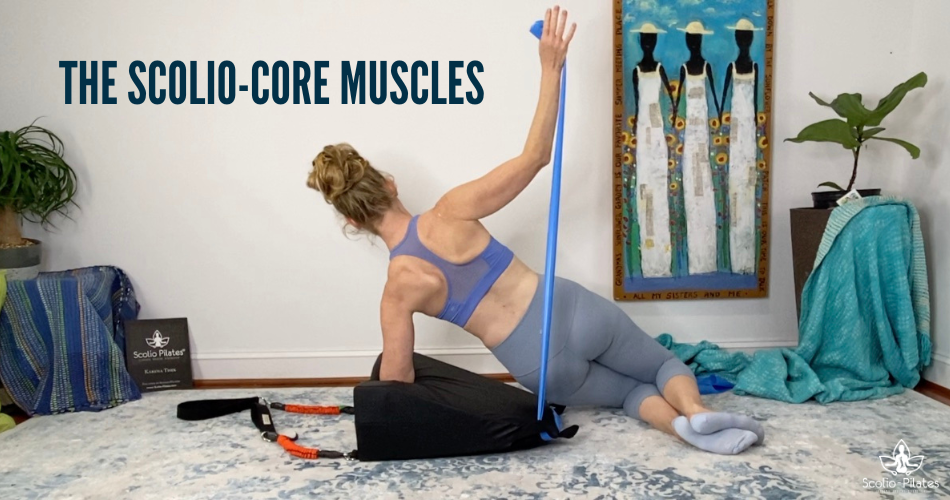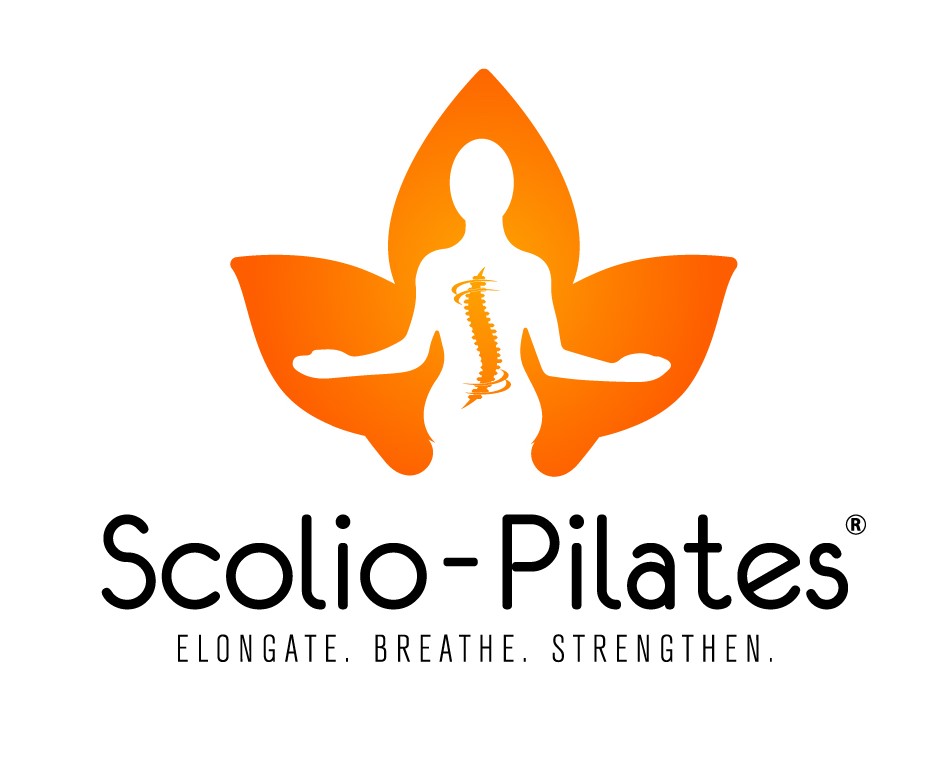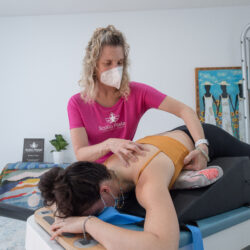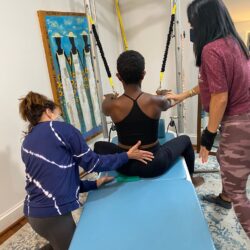
The Scolio-Core Muscles
Finding suitable core exercises can be daunting for those living with scoliosis. It’s not just about what exercises to do but also understanding which ones to avoid or modify to prevent the progression of your curve or trigger pain. In this post, we’ll delve into the dos and don’ts of scoliosis core exercises, focusing on maintaining a well-aligned (neutral) scoli-spine and why this is crucial for spinal health.
What is neutral spine?
A neutral spine is a position where the head, shoulders, and pelvis are aligned and balanced. It’s the safest position for the spine, especially for those with scoliosis. Deviating from this alignment through flexion, extension, side flexion, or rotation can put undue stress on the spine – not just on the joints, but the bones themselves.
Your Scoli-Core safe.
Some popular, go-to core exercises are not recommended for those of us with interesting spines – aka, scoliosis. Here’s why:
-
-
- Crunches and Repetitive Flexion: A common exercise, crunches involve rounding the upper back, creating compressive forces on the spine. For those with scoliosis, this can intensify pressure on your vertebrae, which can contribute to discomfort, pain
- Side Flexion with or without Resistance: Exercises like standing side flexions with dumbbells may seem helpful, but they can actually increase compression on the curved side of the spine. There’s also a risk that one side of the body may work harder than the other, further contributing to muscular and imbalance of the spine.
- Resistant Rotation Movements: Exercises like standing rotations with cables or bands are often misunderstood as beneficial for scoliosis. However, they lack specificity and can lead to excessive movement in more mobile spinal segments, resulting in discomfort or pain.
-
However, many exercises are scoliosis-safe and can give you the core strength you are looking for, especially when you are in your corrections.
Recommended Exercise:
-
-
- Sleepy Flamingo: With Sleepy Flamingo, we have all the support and added control of the floor and our Scolio-Wedges. With our alignment perfect, we lift a single leg. Why is this so powerful? Because legs are heavy! And when that single leg lifts, our core engages like a superhero. But not just that, our spine and hip muscles are engaging also.
- Side Plank: This exercise targets the muscles along the sides of the abdomen, particularly the obliques and muscles in the lower back. It helps strengthen these muscles to help balance the forces on either side of the spine. Side plank is a low-impact exercise that does not place excessive pressure or stress on the spine, making it suitable for individuals with scoliosis who might experience discomfort with high-impact or compressive exercises.
- Muscle cylinder: When you are ready to step up the challenge, Muscle Cylinder is waiting for you. It’s more challenging because you have to hold all those corrections yourself – no floor, no wedges.
-
Give those exercises a try and let us know how it feels. By understanding and respecting your body’s limits, you can maintain an active lifestyle while managing scoliosis effectively. Remember, the key is balance and careful consideration of your unique curve. Stay active, stay informed, and, most importantly, listen to your body. It’s the best guide on your journey to wellness with scoliosis.
Are you a professional looking to serve those with scoliosis? Learn the steps towards becoming an Authorized Scolio-Pilates Practitioner.


